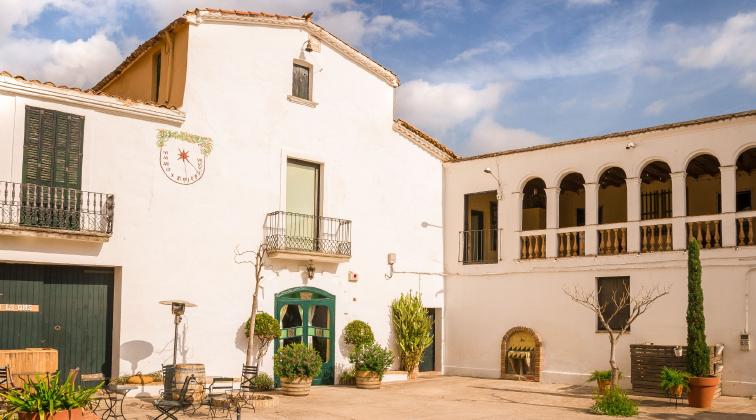More than 400 wineries produce sparkling wines in Spain, all under the umbrella of the D.O. Cava. 90% of them are located in the Catalan region of Penedès, just an hour away from Barcelona, making it the busiest region in terms of wine tourism.
Some wineries are centuries old, as it should be remembered that the traditional method of making cava was introduced precisely in Penedès in 1868. Some are monumental (it's impossible not to think of Codorniu or Freixenet), built by renowned architects as true temples of wine.
And then there's Ca n'Estella. The winery was founded in 1800 by the Estella family and later acquired and revitalized by the Rabetllat family in 1964, after the crises of phylloxera and the Spanish Civil War. Since then, three generations of the family have been improving the technique and accumulating wisdom and experience alongside the vines.
The winery has accumulated more than 50 international awards in the last 15 years, including gold medals for the Gran Clot dels Oms Chardonnay wine in 2014 and the Rabetllat i Vidal Brut Nature cava in 2016. Yet it still maintains the spirit of a family winery, distributed around the central courtyard of a farmhouse and managed by its owner, the winemaker Anna Vidal.
Ca N'Estella offers the opportunity to visit an authentic cava winery just 45 minutes from the center of Barcelona, without the overcrowding that large wineries suffer from, connected to the land and true to its origins since, in the 1960s, Delfí Rabetllat returned from French exile loaded with enthusiasm, knowledge, love for the vines, dedication, and perseverance.
When you visit Ca N'Estella, time seems to stand still. The hustle and bustle of Barcelona and the surrounding industrial area are left behind, giving way to the tranquility and haven of vines, fruit trees, and ancient olive trees. The interior of the family home houses the vestiges of a 12th-century Romanesque church, whose two stone arches still support the structure of the farmhouse, as well as a series of family antiques.
It is impossible not to fall in love when exploring the old fermentation tanks of the Estella family, hidden behind a thick stone wall on the north side of the house and covered with ceramic tiles. There lie the secrets of the time before electricity, when everything was done manually and artisanally. Above the opening of the tanks, you can see the rails on which the old wooden press used to move, filling tank after tank with the Estella wines. In the darkness of one of the tanks, one of the oldest wines on the estate is also preserved, a symbol of transmission, love of work, and a father to a daughter. The last bottles of that 2001 Cabernet Sauvignon Gran Reserva continue to age, infused with history and soul.
Anna, Roser, and the whole team's warmth will make visitors feel at home while tasting cavas and typical local tapas on a terrace overlooking the courtyard and vineyards. The wide range of cavas ranges from the French-style, house brand to the limited edition of local varieties: macabeu, xarel.lo, and parellada, to the surprising dry rosé of garnatxa and trepat. They all carry the distinctive cocoa aroma that marks Rabetllat i Vidal cavas from the winery.
So now you know one of Penedès' best-kept secrets! Don't miss the opportunity to uncork a bottle of cava to celebrate life in a place.

Oct 2017